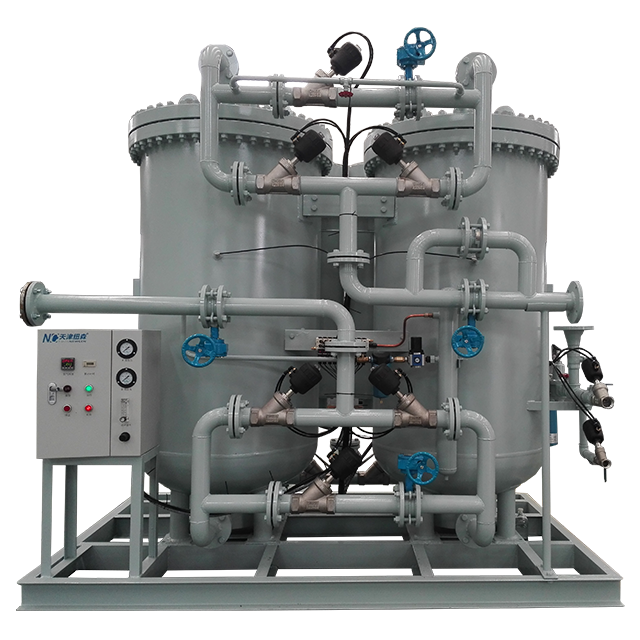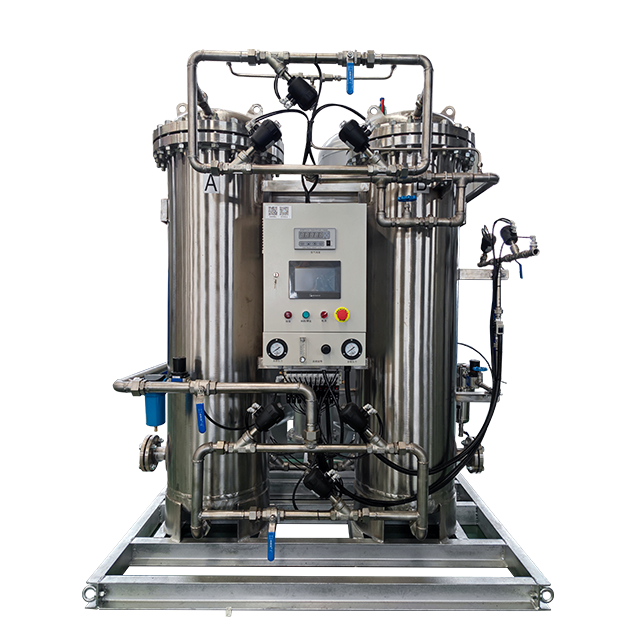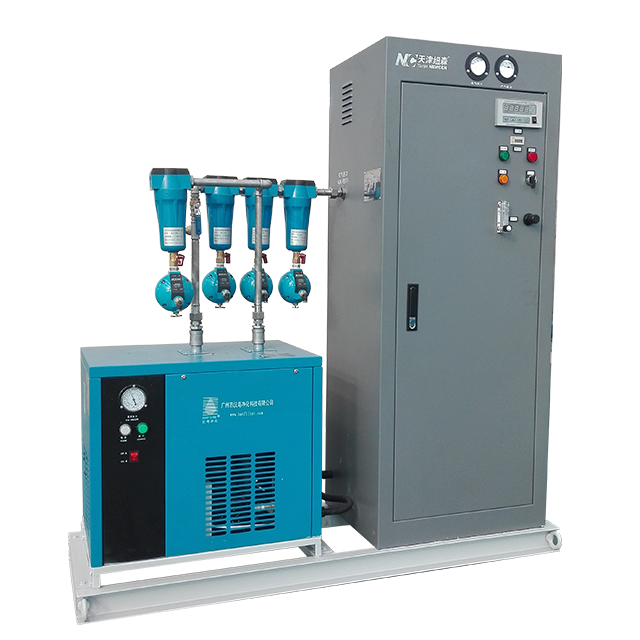


Nitrogen Generators for Food Preservation: The Best Choice for Ensuring Freshness and Quality
Nitrogen generators for food preservation are essential in the food processing, packaging, and transportation industries. By replacing oxygen with nitrogen, these generators effectively prevent oxidation, extend shelf life, and maintain food taste and nutrition. This article will explain how nitrogen generators work, their advantages, and applications in the food industry, providing a clear understanding of this essential preservation tool.
How a Food Preservation Nitrogen Generator Works
Food preservation nitrogen generators primarily use PSA (Pressure Swing Adsorption) technology to separate nitrogen from air, removing oxygen and other impurities. Nitrogen helps create an oxygen-free environment in food packaging, storage, and transportation, reducing oxidation, bacteria growth, and spoilage to extend the product's shelf life.
Advantages of Nitrogen Generators for Food Preservation
1. Extended Shelf Life
A nitrogen environment effectively inhibits the growth of bacteria and mold, extending the shelf life of perishable foods like meat, dairy products, fruits, and vegetables. Nitrogen also slows down rancidity, keeping food fresh for longer periods.
2. Preserves Food Color and Texture
In an oxygen-free environment, food retains its color, taste, and texture. For example, nitrogen-packed chips stay crispy, while fruits and vegetables remain fresh.
3. Reduced Use of Preservatives
With nitrogen preservation, companies can prolong food shelf life without excessive use of preservatives, meeting consumer demand for natural and healthy products, thus enhancing market competitiveness.
4. Lower Storage and Transportation Costs
By extending food storage time, nitrogen generators reduce waste in inventory and losses during transportation, enabling higher efficiency in the food supply chain.
Applications of Nitrogen Generators for Food Preservation
1. Food Processing Plants
In food processing, nitrogen generators are used on packaging lines to inject high-purity nitrogen, reducing residual oxygen levels and extending product shelf life.
2. Cold Storage and Cold Chain Transport
Nitrogen generators suit cold chain transport by protecting food with a nitrogen atmosphere, effectively preventing spoilage and deterioration during long-distance transportation.
3. Grain Storage
In grain and agricultural product storage, nitrogen prevents mold and insect growth, making it ideal for long-term storage of grains, nuts, and dried fruits, ensuring food quality.
How to Choose the Right Food Preservation Nitrogen Generator
1. Determine Nitrogen Purity and Production Requirements
Select a nitrogen generator capable of producing nitrogen purity between 99% and 99.9% based on food type and preservation needs to achieve optimal freshness. Ensure the device's daily nitrogen output meets production and packaging requirements.
2. Equipment Stability and Maintenance Costs
Choose durable, user-friendly equipment with low maintenance costs to ensure continuous, stable nitrogen supply for the production line.
3. Select a Brand with After-Sales Support
When choosing a nitrogen generator for food preservation, prioritize brands offering excellent after-sales support to address any equipment issues promptly and ensure smooth production.
Conclusion
Nitrogen generators for food preservation offer a reliable, efficient nitrogen solution for food processing and storage industries. By using nitrogen preservation technology, food companies can effectively extend product shelf life, maintain food quality and nutrition, and improve operational efficiency while reducing costs. In today’s food industry, nitrogen generators are essential for ensuring product quality and meeting consumer expectations.
CONTACT
Honesty and pragmatism, pursuit of excellence
We are a professional manufacturer of nitrogen generators









